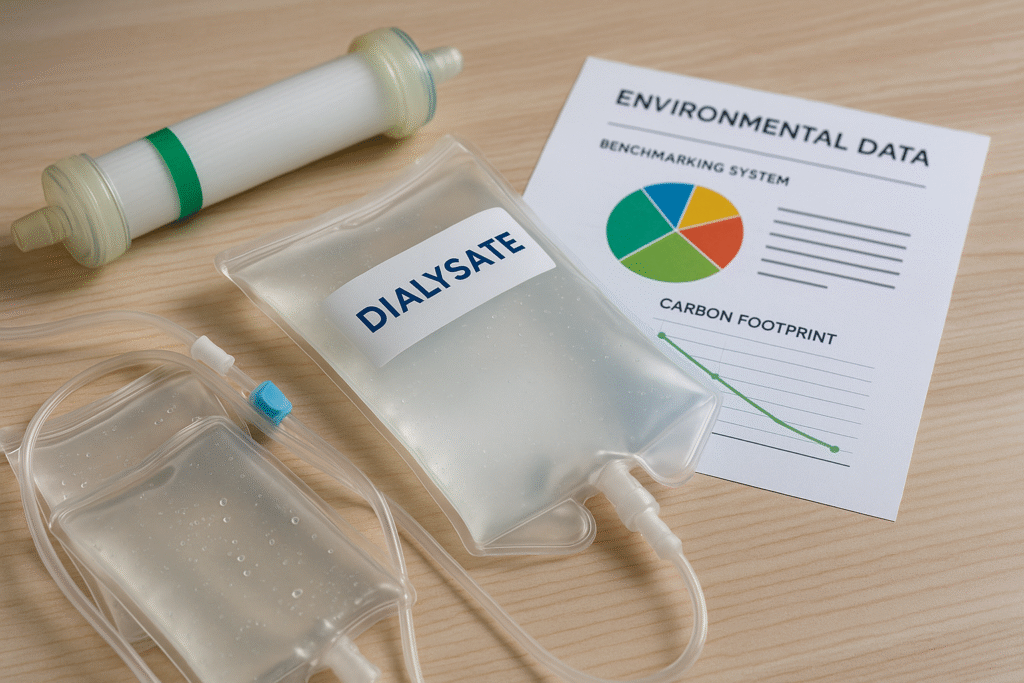
Green kidneys: solving nephrology’s climate paradox
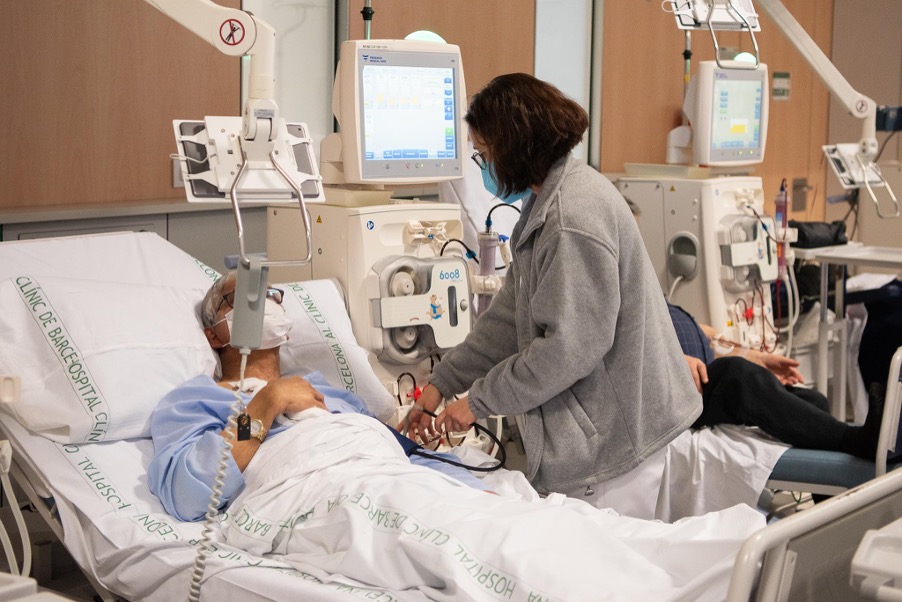
By Marie Jamet
There is something rotten in the state of humans. The more we push the climate to change, the sicker we get, hence the more we need healthcare. The more healthcare we consume, the more it contributes to global emissions, and so the vicious circle is complete.
Because of this paradox, healthcare now accounts for around 4.5% of all global emissions, according to a study by The Shift project. The World Health Organization (WHO) report for the first Health summit at COP29 in Baku on November 2024 states that “If the healthcare sector were a country, it would rank as the fifth-largest emitter worldwide”.
The paradox is especially true of nephrology. A hundred million Europeans already suffer from chronic kidney disease. A meta study evaluated that for every 1°C rise in temperature during heatwaves, there was a 1% increase in renal complications.
Dialysis “has a really high carbon footprint compared with most other health interventions[…]”
Moreover, nephrology is a heavy contributor to healthcare’s carbon footprint. Issues come from different sources: the main treatment, haemodialysis, requires large amounts of treated water that is largely wasted. It generates significant waste, particularly plastic, and requires patients to visit hospitals three times weekly, mostly by car.
Around 7 tonnes of CO2eq are emitted per dialysis patient annually, compared to 0.4 tonnes per patient across all UK’s National Health services, a British study showed. The French-speaking society of nephrology, dialysis, and transplantation (SFNDT) estimates that a kidney patient consumes 60m³ of water annually in dialysis, adding to the 53m³ each inhabitant already consumes. Dialysis “has a really high carbon footprint compared with most other health interventions, because people are on dialysis for quite a while. It’s a huge amount of resources, a huge amount of energy, a huge amount of water,” explains Brett Duane, public health specialist and coordinator of KitNewCare, a European project aiming to reduce kidney care’s carbon footprint.
“Information is power”
In France, Maryvonne Hourmant, former head of the Nephrology and clinical immunology department at Nantes University Hospital and the then president of the SFNDT created a dedicated work group on sustainability around 2020. The green nephrology group published a guide focusing on dialysis in 2023. She was inspired by studies by British and Australian colleagues. Now retired, she keeps pushing the subject and has joined the Sustainable Nephrology Task Force within the European Renal Association (ERA).
“there is reluctance among professionals to adopt new things”
The French group feeds trainers with climate change facts and data to both professionals and patients. Hourmant states that among professionals, “young nephrologists, in particular, and young people in general are very interested, and also very worried, about ecology and climate change.” She acknowledges that “there is reluctance among professionals to adopt new things”. But progress comes through ”multi-professional green teams, whose coordination is assigned to someone who is truly motivated, but who is not necessarily a nephrologist,” explains Hourmant, adding: “Even if they start with three or four people, they bring the others on board because there are results. We value these results: we make posters [with these results]’. In short, we show the positive results. And that motivates others to participate.”
[KitNewCare] aims at tackling the whole chain of decarbonising nephrology with “a comprehensive approach,”
Marta Arias, a nephrologist from Barcelona and education coordinator for the European project KitNewCare, describes a “snowball effect” driven by social contagion, how individual actions and awareness can inspire others and gradually shift professional culture.
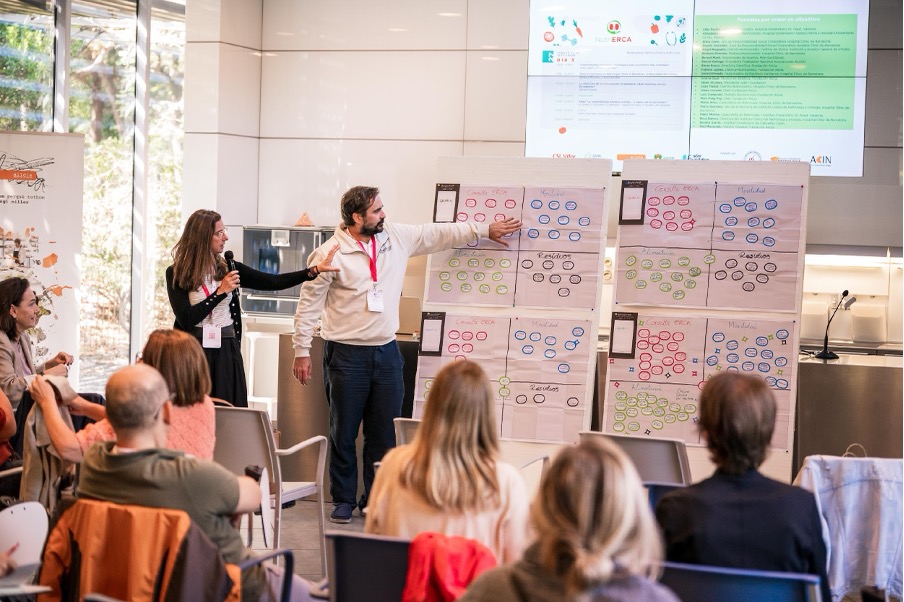
Training nephrologists and nutritionists to a greener approach to nutrition for chronic kidney disease patients – Photo courtesy of Joan Gosa
It comes from those Arias called the “champions”, people who are already into sustainability on a personal level. Data-driven, the project aims at tackling the whole chain of decarbonising nephrology with “a comprehensive approach,” as Duane says, tackling all aspects in parallel: data, education, and technology. From Arias’ experience, change comes from both climate information and simple actions like reminder stickers to switch off lights. Like Hourmant, she recognises that “it is difficult to change habits,” but adds, “we have to keep going. Information is power.” Her goal, she says, “is to raise awareness of the state of the world in terms of climate change, to present the data and show how climate change affects kidney health, and how nephrology itself contributes to climate change”, hoping that this information will stick and help professionals make other choices back in their hospital. These trainings are aimed at all health professionals: nurses, nephrologists, managers, but also nutritionists and dieticians, as education on nutrition can both have an impact on climate and patients’ health. She considers that “the future lies in education, beginning with medical students”.
Beyond education, working on a cleaner dialysis
Despite growing awareness, dialysis technology still weighs heavily on kidney care’s carbon footprint. Aligned with the EU climate law objectives, KitNewCare “seeks to reduce the water consumption, energy consumption, and the waste generation […] to reduce the burden of dialysis”. Karin Gerritsen, its technical coordinator, adds that the focus is “on dialysis because this is where the technological improvements can be made.”
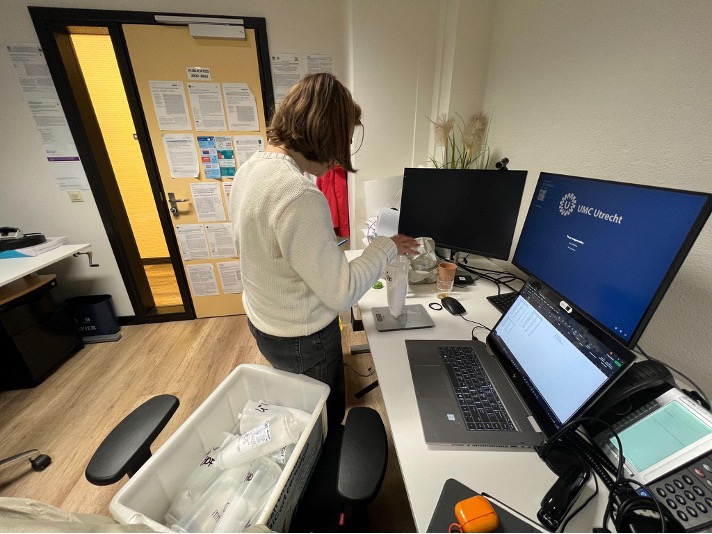
Weighing of the bicarbonate cartridges in a dialysis center at UMC Utrecht – Josje Smulders
Several innovations build on European trials: one reuses wastewater from the purification process to flush toilets, another redesigns the water treatment sequence to boost water recovery rates, transitioning from reverse osmosis to forward osmosis technology. An FDA-approved American device that regenerates dialyzers, the fully plastic, single-use filtering membranes discarded after each dialysis session, is being evaluated for CE certification, which would “significantly lower the footprint of dialysis,” says Gerritsen. An Asian model is also being assessed to tackle the second major carbon “culprit”: bicarbonate cartridges that deliver the alkaline component during dialysis. Rather than relying on plastic canisters, this approach would “make the alkaline components at the central location [within the hospital], and redirect [them] to the new dialysis machines,” describes Gerritsen. A final innovation involves a machine that decontaminates biohazardous waste on-site, enabling recycling instead of incineration.
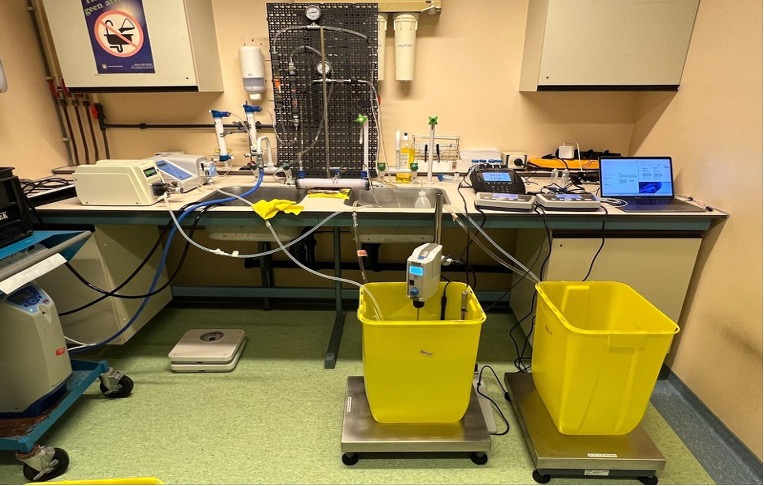
Experimental setup at UMC Utrecht – Photo by Jan Tsai
While innovations could reduce the environmental burden of dialysis, avoiding this treatment altogether is the greenest solution. Transplantation offers a major improvement: “once people get a kidney transplantation, the environmental footprint almost goes away,” Duane reminds us. Gone are the three times a week travels to the hospital, gone are the plastic and water waste.
Yet, transplantation carries the smaller burden of required medication and the risk of new surgery. Both Gerritsen and Duane explain that the most low-carbon solution is prevention: “If you detect the disease at an early stage, then you can perhaps prevent dialysis. That would make the most impact”.
Chronic kidney disease is a silent illness. Most patients learn of it once it is too late for a lighter treatment.Urine tests currently being tested in Spain could enable earlier diagnosis. The World Health Organisation (WHO), in the report for COP29 health summit, advocates this preventive approach, which “results in healthier patients, less use of the medical system and resources, and lower emissions.”
Prevention requires public action and political will, but lowering emissions would lead to fewer chronic illnesses and reduced need for the healthcare system, whose carbon footprint would shrink. And so the initial vicious circle is reversed.

How green is Kidney Care? New research sheds light on the environmental impact of haemodialysis
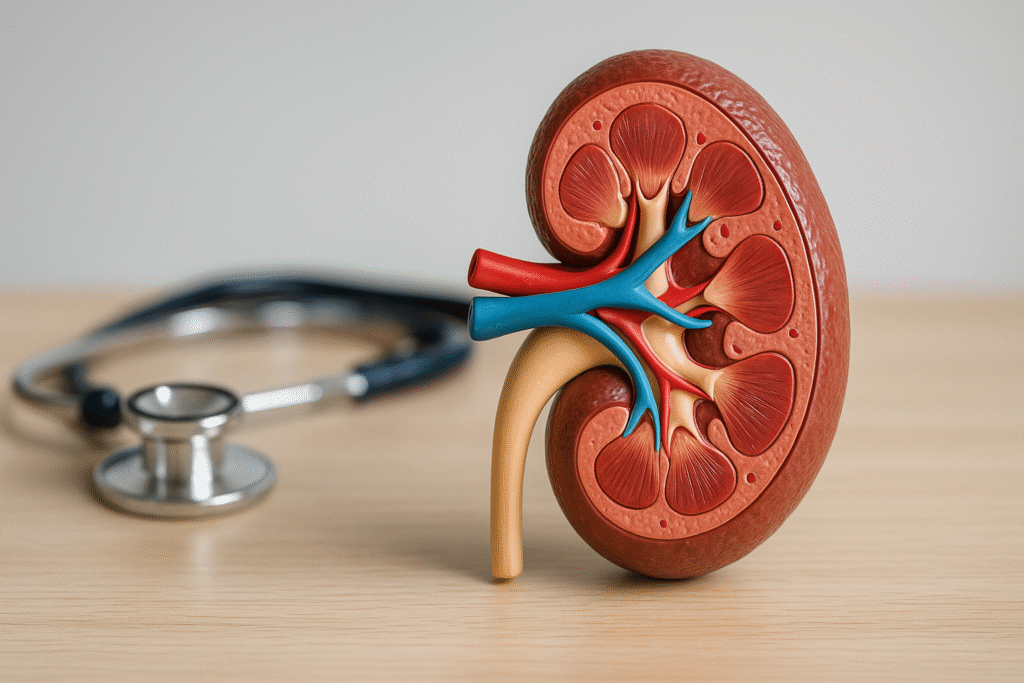
Small but mighty: your kidneys and the silent epidemic of chronic kidney disease
